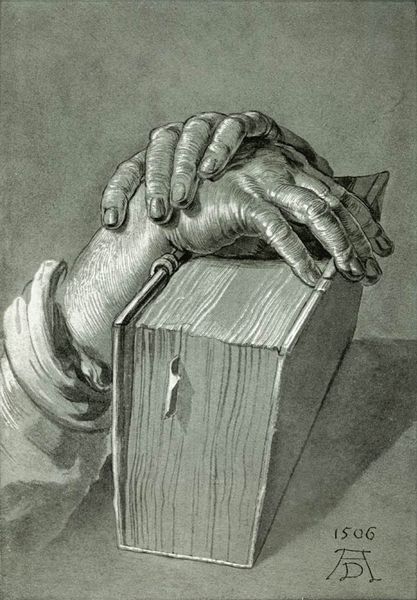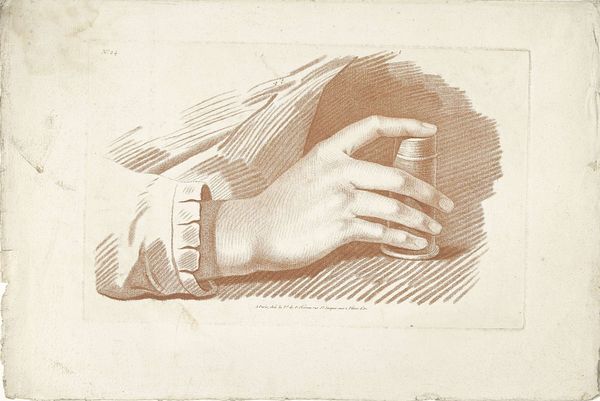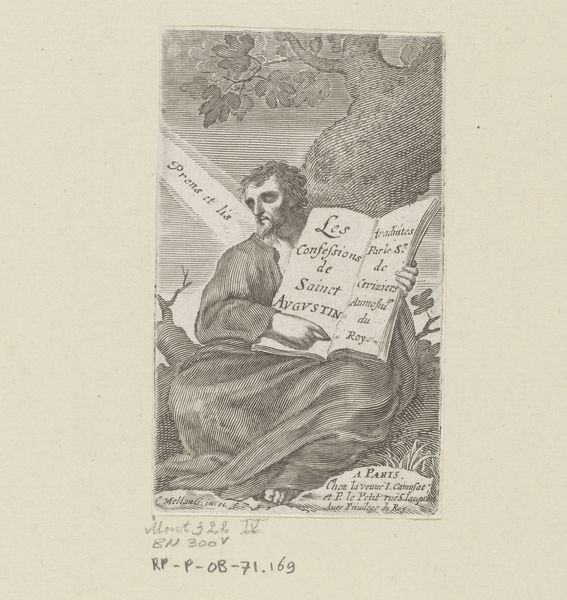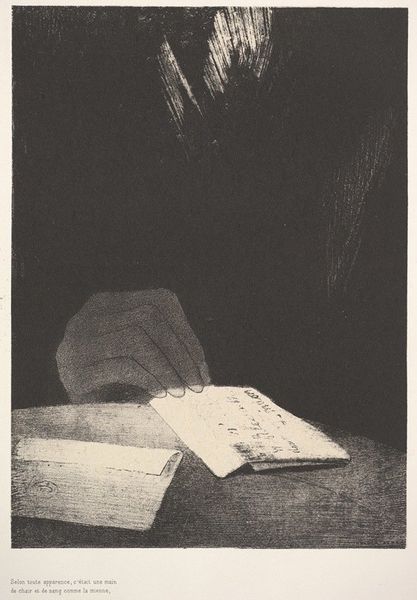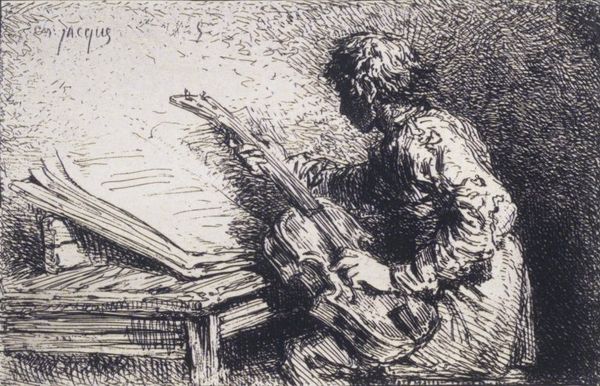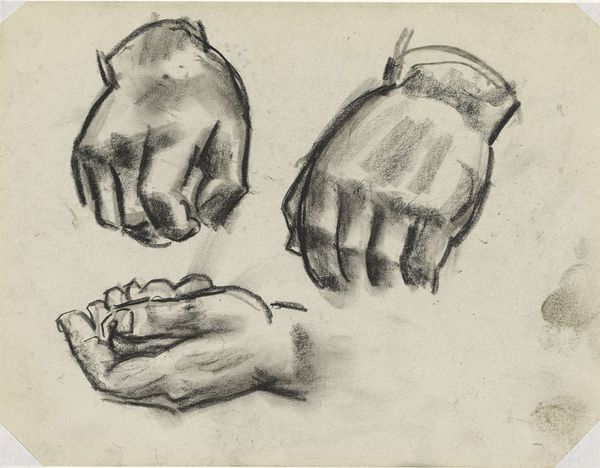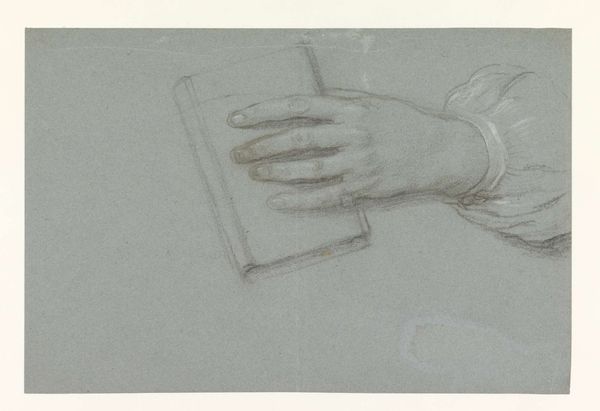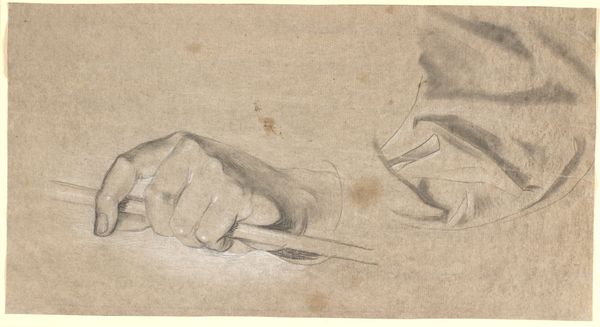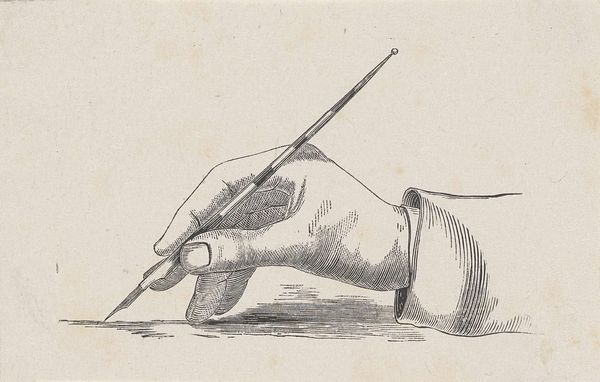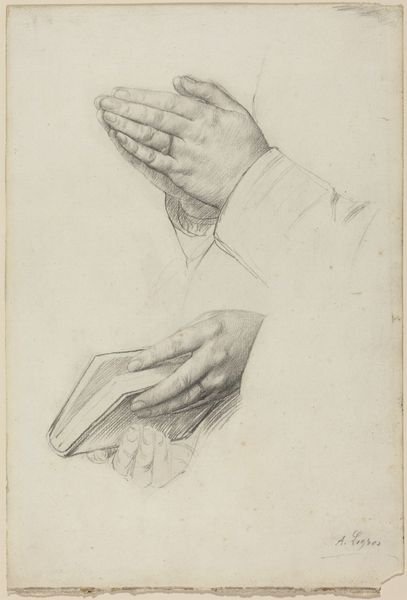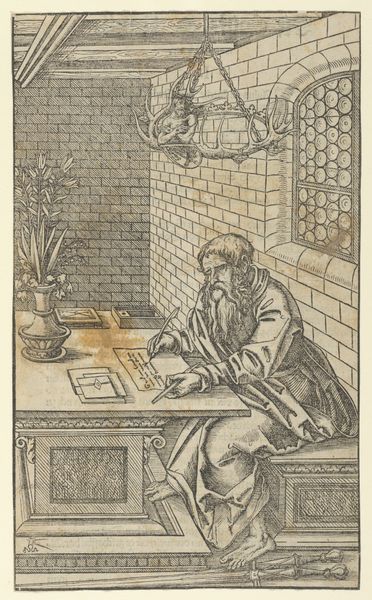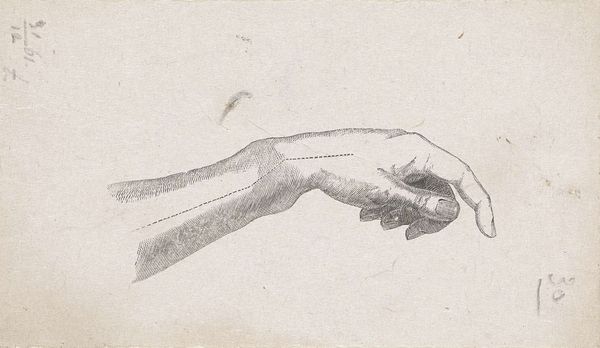
drawing, print, pencil
#
portrait
#
pencil drawn
#
drawing
#
narrative-art
# print
#
pencil sketch
#
social-realism
#
portrait reference
#
pencil drawing
#
pencil
#
ashcan-school
#
history-painting
#
modernism
#
realism
Dimensions: stone: ca. 244 x -- mm image: 199 x 255 mm sheet: 292 x 406 mm
Copyright: National Gallery of Art: CC0 1.0
Editor: Here we have Hannah Rile's "A Letter to the President" from 1939, rendered in pencil. There's a deep sense of vulnerability in the hands holding the letter, and a stark contrast between the personal plea and the faceless recipient. What symbols resonate with you in this piece? Curator: The most immediate symbol is the letter itself. Beyond the words, consider its cultural weight. A handwritten letter implies intimacy, a direct appeal bypassing bureaucracy. During the Depression, these letters to political figures became powerful symbols of desperation and a collapsing social safety net. Do you see how the hands both cradle and almost offer the letter? Editor: Yes, they're almost pleading. They seem worn, even though the letter says the man is young. Curator: Exactly. And that’s where the emotional and psychological weight enters. These hands embody not just individual hardship but a collective trauma. Consider the choice of pencil - accessible, unpretentious, echoing the working class's tools. Think about the broader symbolism of the President – an almost mythical figure, a father-figure, holding immense power. Editor: So, it's a clash of power dynamics. The personal versus the political, the individual versus the institution? Curator: Precisely! And consider that the letter is slightly obscured, its content partially hidden, as if the writer’s voice is being muffled by the enormity of the situation. It reminds me of the anxieties represented by social realism, but here internalized in the subject. Editor: That makes the personal plea for help even more poignant. It goes beyond just the words on the page. I’ll definitely view social realist art differently now. Curator: Indeed, every element – the medium, the composition, even the implied recipient – contributes to a layered narrative of hope, desperation, and the complex relationship between the individual and power.
Comments
No comments
Be the first to comment and join the conversation on the ultimate creative platform.
